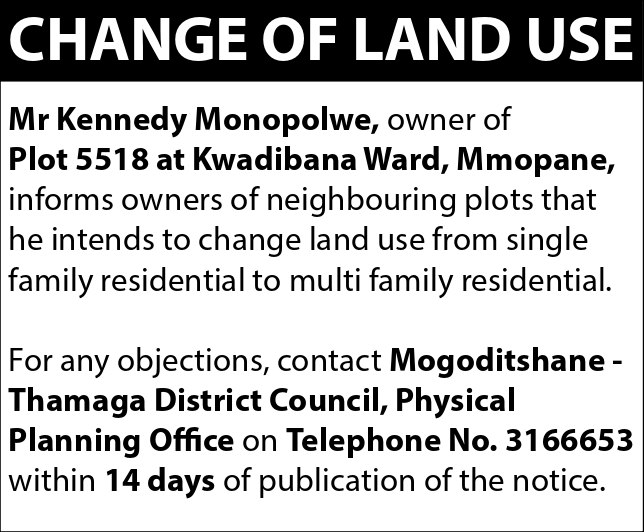• Project to have a lifespan beyond 2070
• WUC’s sewage woes to be reduced significantly
• Project part of mining giant’s water conservation strategy
• 100% Botswana citizen-owned companies contracted for project
Walter Wasosa
Botswana’s largest waste water harvesting project for industrial use is scheduled to go online in December 2019 when Debswana Diamond Company draws waste water from Jwaneng town’s sewerage ponds for utilization in Jwaneng Mine’s water-intensive ore processing plant.
The project, whose construction and supervision by citizen contractors and local consultants commenced in November 2017, was delivered on time this month and is set to run for at least fifty years. Sustainable mining is at the core of Debswana’s strategy, as such this water conservation initiative will go a long way in conserving this critical natural resource.
Other spill over benefits include environmental conservation, resolution of the town’s sewage pollution concerns and preclusion of livestock irresistibly drawn to the unprotected sewerage ponds.
Project Manager, Mike Brook, says the water is pumped from the ponds to the mine’s Blue Area where it is mixed with the mine’s own sewage flow before purification using a gas-based chlorination water treatment system. “The waste water supply from the Water Utilities Corporation ponds augments the mine’s existing sewage water by 15 times, thus when combined, this water source will free up an equivalent volume of fresh water from the mine’s northern wellfield,” he explains.
It is anticipated that in the first year of its operation, the flow of the treated water for ore processing to the ore processing plant will be between 1300-1500m3 per day, equivalent to 6 percent of fresh water pumped from the Magagarape source. The volume is projected to increase exponentially to 2500m3 per day by year 15, and 5280m3 by the thirtieth year which equates to 25 percent of fresh water saved from the northern wellfield.
Brook says the pace-setting Jwaneng Waste Water Utilization plant will be the largest in Botswana. “It will be the largest of its kind in Botswana that uses treated sewerage water for industrial/mining use,” he says. “It is an example that Debswana is setting for the rest of the mining companies and other large water users in Botswana to harvest waste water, treat it and put it to appropriate use.”
The seasoned expert says prior to the project’s commencement, there were three alternative options available for the mine to unconventionally harvest water, including harvesting of storm water from Jwaneng town’s water ways and pumping water from an old prospecting shaft sunk in 1984 at the DK7 kimberlite pipe.
He says the other options proved too risky, costly, unsustainable and disruptive to mine operations and traffic flows within Jwaneng town. “Utilization of the sewage water from the town was the most viable option,” Brook explains. “The water in the wellfield is first-class drinking water which we would not necessarily want to use for mine processing. By keeping it in the ground, we keep it for future generations for drinking water supply.”
According to Brook, the project solves the problem of under-utilization of sewage water and resultant pollution. “For many years, the Water Utilities Corporation’s ponds in Jwaneng have been overflowing because the only user of Jwaneng town’s sewage water in the town has been the Debswana golf course, the surrounding parks and gardens, and the sports fields,” he explains. “The water has been attracting livestock from surrounding villages which are killed or maimed on the road side by heavy duty trucks using the Trans Kalahari Corridor to and from Namibia.”
Environmental conservation wise, Brook says the project mitigates problems caused by animals encroaching into the stagnant dirty water and lessens the pungent smell from the town’s sewerage confines.
Debswana prides itself in being a leading campaigner for safety at work, as evidenced by a clean sheet of a zero total recorded injury frequency rate during the project’s construction.
As part of its legacy, the project bequeathed a P300 000 donation in the form of a fully equipped porta cabin (tables, chairs, photocopier, and projector screen), to Machana Primary School that was converted to a classroom with a capacity to hold forty students.




